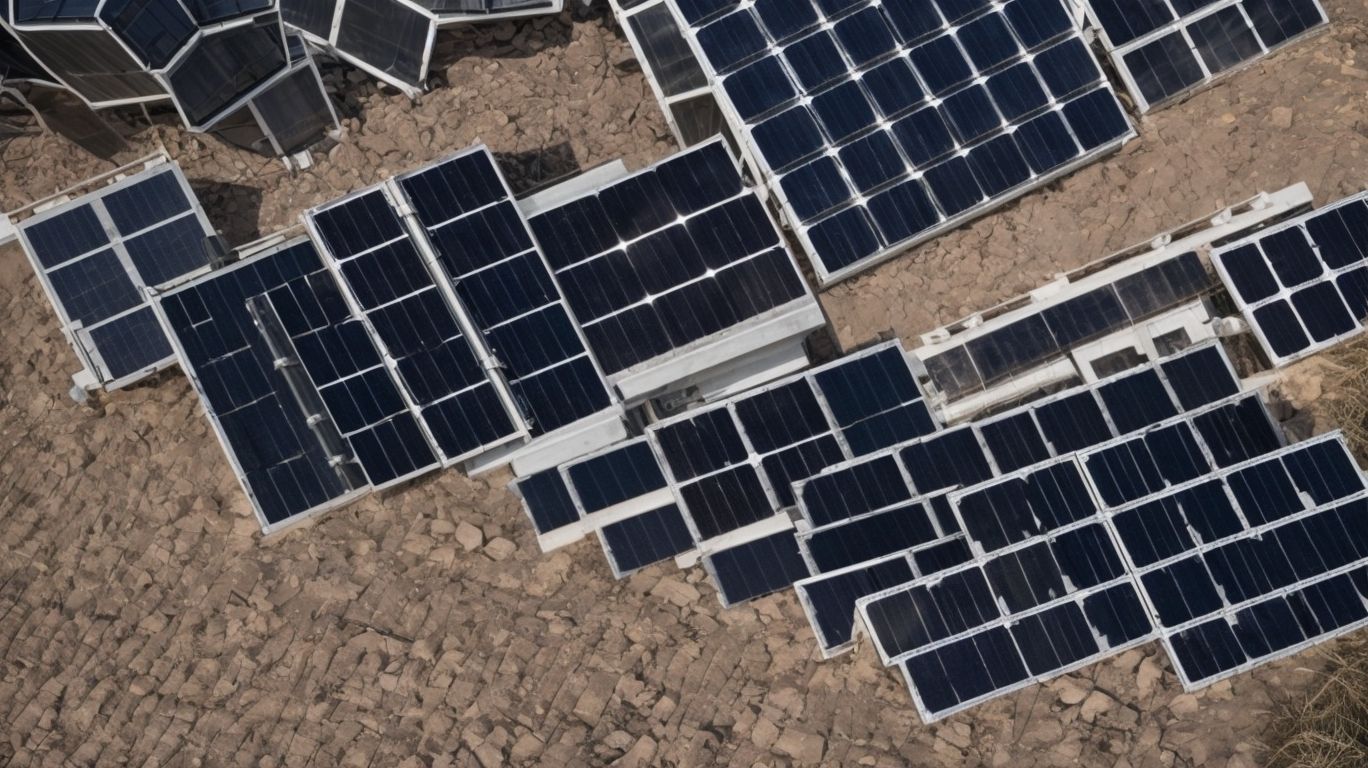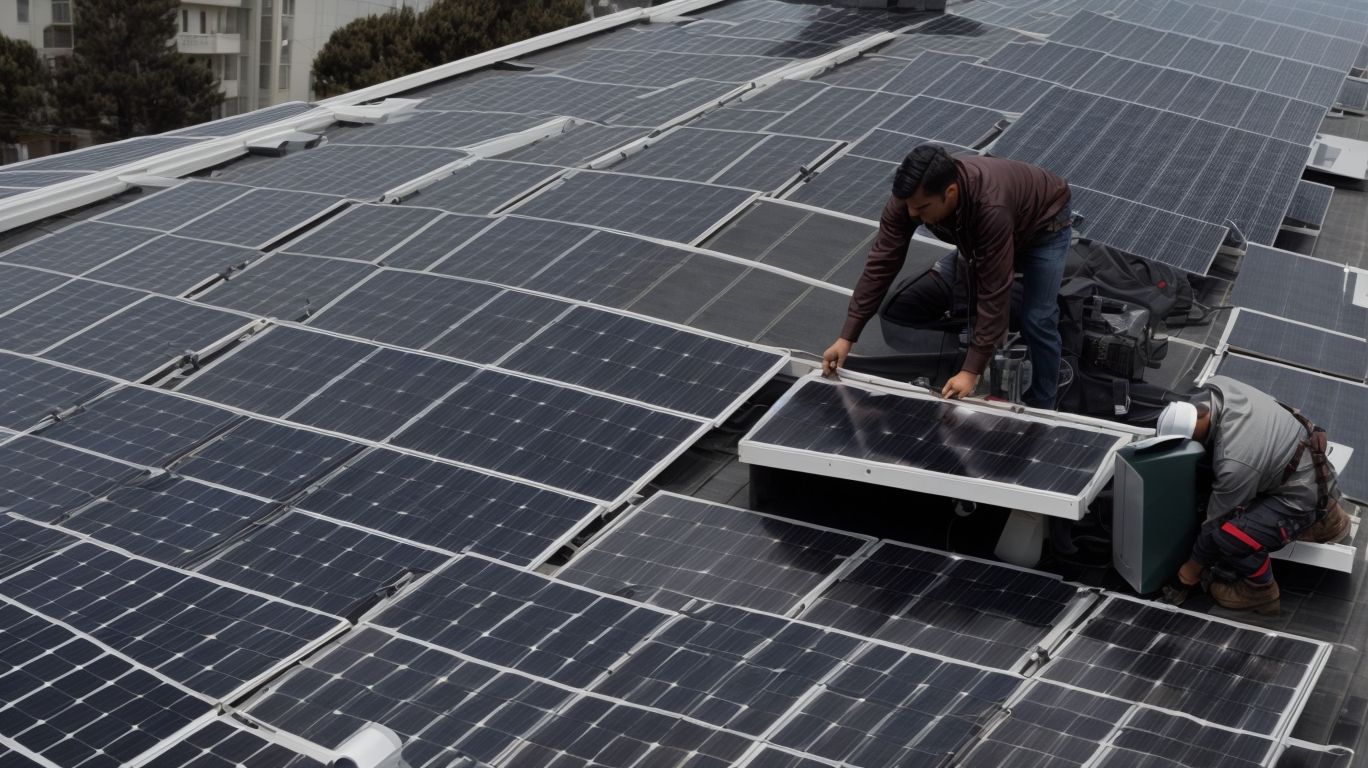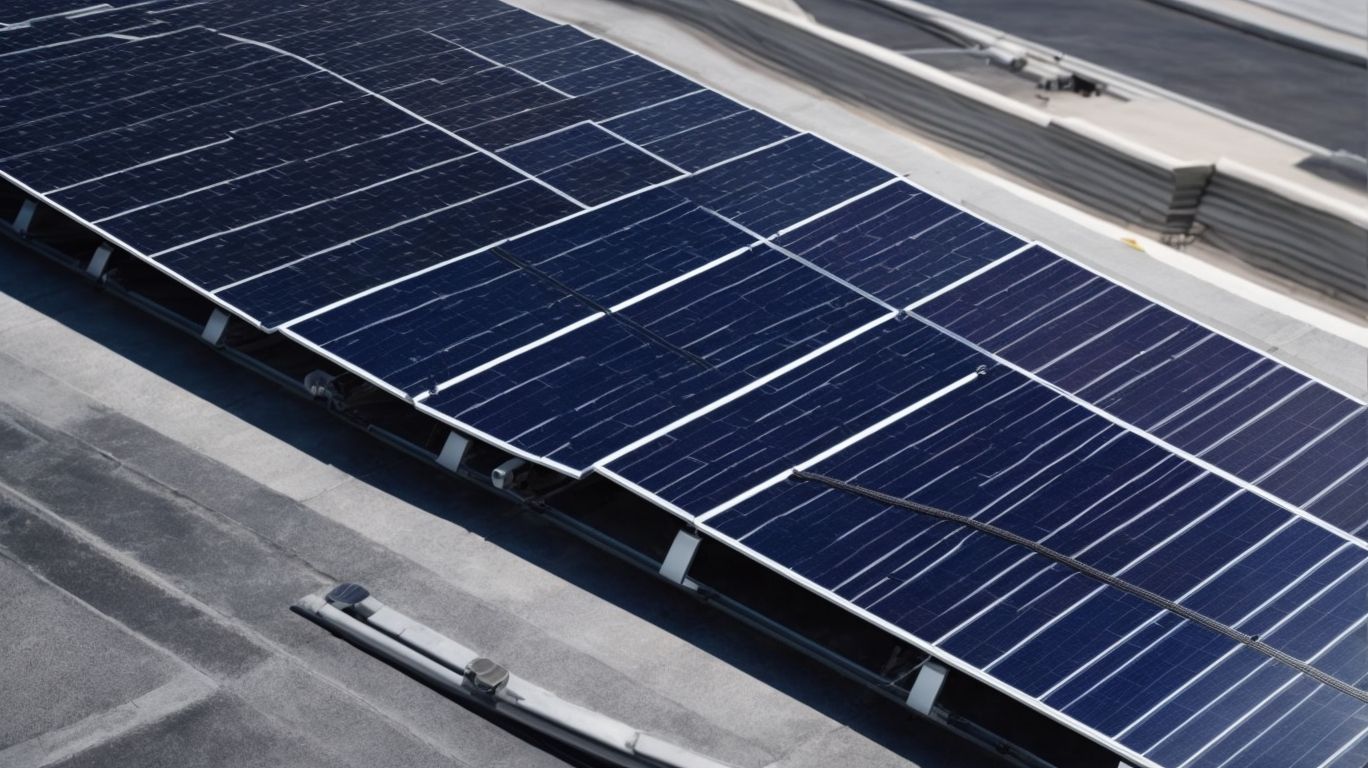
The Pros and Cons of Ballasted Solar Panel Mounts
Considering installing solar panels on your roof?
One mounting option to explore is ballasted solar panel mounts.
In this article, we will discuss what ballasted solar panel mounts are, how they work, and the benefits they offer, such as easy installation, cost-effectiveness, and versatility in roof types.
We will also delve into the drawbacks, including weight limitations, potential for wind uplift, and limited tilt angle options.
Compare ballasted mounts to other mounting systems and examine their environmental impacts.
Let’s explore the pros and cons of ballasted solar panel mounts together.
What Are Ballasted Solar Panel Mounts?
Ballasted solar panel mounts are a type of mounting system used to secure photovoltaic panels on rooftops or grounds without the need for roof penetration.
These mounts rely on weight, typically in the form of concrete blocks or ballast trays, to hold the solar panels in place. The purpose of ballasted mounts is to provide a stable and secure foundation for the panels while also simplifying the installation process. This type of mounting system is often preferred for installations on flat roofs or in locations where roof penetrations are not feasible. The design of ballasted mounts allows for easy adjustments and maintenance of the solar panels, making them a versatile and practical choice for various solar energy systems.
How Do Ballasted Solar Panel Mounts Work?
Ballasted solar panel mounts function by utilizing weighted blocks or ballasts to anchor the panels in place, providing stability and support for the photovoltaic array.
These ballast blocks are strategically placed along the perimeter of the solar panel array to counterbalance wind forces and keep the system secure. The installation process involves carefully positioning the blocks on the mounting surface, ensuring that they are evenly distributed to maintain equilibrium. By effectively distributing weight, the ballast blocks help prevent the panels from shifting or tipping over. This not only enhances the structural integrity of the solar array but also contributes to its overall energy output and performance by optimizing the system’s angle towards the sun for maximum efficiency.
What Are the Benefits of Using Ballasted Solar Panel Mounts?
The advantages of ballasted solar panel mounts include easy installation, cost-effectiveness, and the promotion of renewable energy generation.
These mounts are particularly beneficial for those aiming to embrace sustainability and reduce their carbon footprint. By opting for ballasted solar panel mounts, users can enjoy the perks of enhanced energy savings with minimal effort in setup. These mounts play a crucial role in supporting green technology initiatives, making a significant contribution to renewable energy goals. The use of ballasted solar panel mounts not only offers immediate benefits in terms of cost-saving and convenience but also aligns with long-term environmental priorities.
Easy Installation
One of the key benefits of ballasted solar panel mounts is their ease of installation, which reduces labor costs and enhances operational efficiency.
These ballasted mounts are designed to minimize the need for extensive groundwork and complex installation processes, making them a preferred choice for solar projects. By eliminating the requirement for penetrating the roof, permits can typically be obtained more easily and quickly. This streamlined installation process not only adheres to industry standards but also leads to significant time and cost savings. With faster setup times and decreased labor demands, solar installers can maximize their efficiency and complete projects more effectively.
Cost-Effective
Ballasted solar panel mounts offer a cost-effective solution for solar installation, with minimal maintenance requirements and potential long-term energy savings.
They are renowned for their affordability, as the upfront costs are lower compared to traditional mounting systems. The maintenance benefits of ballasted mounts translate into lower operational expenses over time. By reducing the need for costly upkeep and repairs, these mounts help maximize energy efficiency, leading to significant savings on electricity bills. The overall financial efficiency of ballasted mounts is evident in the reduced payback period, making them a wise investment for those looking to save on expenses in the long run. Various financing options are available to further enhance the accessibility of this mounting system.
No Roof Penetration
The absence of roof penetration with ballasted solar panel mounts ensures the integrity of the roof structure and simplifies the installation process, often accompanied by warranty coverage.
This method of installation not only reduces the risk of leaks and potential damage to the roof but also eliminates the need for costly repairs or modifications due to penetrations. The lack of roof penetration maintains the weather resistance of the roof, preventing water infiltration and maintaining the overall durability of the structure. By adhering to regulations that discourage roof penetrations, property owners can also benefit from potential savings on insurance premiums and enhanced property values due to the preserved structural integrity.
Versatility in Roof Types
Ballasted solar panel mounts exhibit versatility in accommodating various roof types, offering flexibility in mounting system design and engineering solutions.
These ballasted mounts can easily incorporate tilt legs to optimize the solar panel’s angle for enhanced energy production. Engineering considerations play a vital role in ensuring the mounts are structurally sound and able to withstand various seismic factors, meeting safety standards. Regulations also play a key role in system customization, dictating aspects such as weight distribution and anchor spacing to comply with local building codes and ensure the longevity of the solar installation.
What Are the Drawbacks of Using Ballasted Solar Panel Mounts?
Despite their benefits, ballasted solar panel mounts have drawbacks such as weight limitations, which can impact the overall stability and performance of the system.
Excessive weight associated with ballasted mounts can make them susceptible to wind uplift, leading to potential structural issues. The reliance on weight for stability poses challenges in maintaining the system’s alignment and tilt angles, affecting its energy efficiency over time. The constant need to ensure the ballast remains intact and evenly distributed adds to the maintenance requirements, increasing the overall cost of ownership for solar installations using this type of mount.
Weight Limitations
Weight limitations in ballasted solar panel mounts can pose challenges to system stability and require precise assembly of components to ensure structural integrity.
Proper assembly techniques play a crucial role in how well a solar panel system withstands external factors like snow loading. When components are not aligned or connected correctly, it can lead to instability and potential damage. Understanding the weight limitations of ballasted mounts is essential not only for system stability but also for the long-term energy payback of the installation. By following guidelines for assembly and considering factors such as wind resistance and snow loading, solar panel systems can be optimized for maximum efficiency and durability.
Potential for Wind Uplift
Ballasted solar panel mounts may face wind uplift issues, especially with limited tilt angle options and potential shading that affects the panels’ exposure to sunlight.
These challenges can significantly impact the energy output of the solar panels, leading to reduced efficiency and overall performance. To tackle wind-related issues, innovative strategies such as utilizing aerodynamic designs and wind deflectors can be implemented. Enhancing the aesthetic appeal of the solar panel mounts not only adds visual appeal but can also improve wind resistance. Incorporating solar battery storage solutions can enhance grid independence and provide a reliable power source during periods of inclement weather.
Limited Tilt Angle Options
The restricted tilt angle options of ballasted solar panel mounts can affect the system’s weather resistance and energy output, influencing overall performance.
For systems with limited tilt angles, the efficiency during different seasons may vary, impacting energy production. The trade-off between a fixed tilt and adjustable mount lies in maintenance requirements, as fixed systems typically have lower maintenance needs but offer less flexibility in optimizing energy generation. When considering net metering, the tilt angle plays a significant role in maximizing the benefits of selling excess energy back to the grid. Weather resilience becomes crucial with constrained tilt angles as the system may be more susceptible to snow buildup or debris accumulation, affecting its overall reliability.
Maintenance and Repair Challenges
Maintenance and repair challenges in ballasted solar panel mounts involve ensuring system durability, implementing monitoring systems for performance tracking, and addressing maintenance requirements.
One of the main concerns with ballasted mounts is the lifespan of the system and the potential need for regular maintenance to ensure their longevity. To mitigate durability issues, it is essential to invest in high-quality materials that can withstand harsh weather conditions and constant exposure. Monitoring systems play a crucial role in detecting any performance deviations early on, allowing for timely intervention to prevent major repairs.
Some strategies to address maintenance requirements include adhering to manufacturer guidelines, conducting routine inspections, and considering warranty options for added protection.
How Do Ballasted Solar Panel Mounts Compare to Other Mounting Systems?
When compared to other mounting systems, ballasted solar panel mounts offer distinct advantages and challenges that differ from ground-mounted or roof-attached alternatives.
- Ballasted mounts are known for their simplicity and flexibility, as they do not require any penetrations into the roof or ground, making them ideal for locations where drilling may not be feasible. This ease of installation can significantly reduce the time and cost involved in setting up a solar panel system.
One limitation of ballasted mounts is that they rely on the weight of the system itself to stay in place, which may not be suitable for all roof types or windy environments. While ground-mounted systems may have a higher impact on property value due to their more visible nature, rooftop installations and ballasted mounts are often seen as more aesthetically pleasing and less obtrusive.
Ballasted vs. Roof-Attached Mounts
The comparison between ballasted and roof-attached mounts underscores differences in roof penetration requirements and installation processes, impacting factors such as structural integrity and regulatory compliance.
Ballasted mounts, which rely on weight to secure solar panels in place, are often preferred for their flexibility in terms of placement and minimal impact on the roof structure.
On the other hand, roof-attached mounts require penetrating the roof surface, which may raise concerns regarding potential leaks and compromise the integrity of the roofing system.
This distinction in mounting methods not only affects the installation complexities but also plays a crucial role in determining the overall energy efficiency of the system and the necessity for obtaining proper permits to ensure compliance with building codes.
Ballasted vs. Ground-Mounted Systems
Comparing ballasted mounts to ground-mounted systems highlights differences in mounting system design, solar array orientation, and land usage requirements, influencing factors such as energy output and installation costs.
Ballasted mounts are ideal for rooftops where penetration is restricted, as they are secured using weights rather than anchors. On the other hand, ground-mounted systems are versatile and can be adjusted for optimal sun exposure.
In terms of array configurations, ballasted mounts generally have fixed tilt angles, while ground-mounted systems offer more flexibility for adjusting tilt angles to maximize energy production.
When it comes to land utilization considerations, regulations may impact the installation of ground-mounted systems, requiring certain setbacks and permissions to comply with zoning laws and environmental regulations.
Design variations also play a crucial role in both mounting systems, as they must be engineered to withstand wind loads, snow loads, and seismic activity depending on the geographic location.
What Are the Environmental Impacts of Ballasted Solar Panel Mounts?
The environmental impacts of ballasted solar panel mounts encompass potential risks such as roof damage, water leakage, and implications for roofing warranties.
These mounting systems can have detrimental effects on the surrounding environment, with concerns ranging from long-term roof integrity issues due to added weight to the increased likelihood of leaks developing over time.
Insufficiently secured ballasted mounts may void the warranty on the roofing materials, leading to financial burdens and maintenance challenges.
Considering the current push towards sustainability and climate change mitigation, it becomes imperative to address the carbon footprint associated with poorly installed ballasted mounts, as they could exacerbate environmental issues rather than help combat them.
Potential for Roof Damage
Ballasted solar panel mounts present a risk of roof damage due to factors like seismic events, potentially affecting property values and requiring structural assessments.
These mounting systems rely on heavy weights to secure solar panels in place, which can exacerbate the impact of seismic activities on the roof structure. The added weight and distribution of the ballast may strain the roof’s integrity, leading to potential leaks, cracks, or even collapses in extreme cases.
Property owners considering green technology options must carefully assess the weather resistance capabilities of such installations to prevent long-term damage. Implementing proactive measures like routine inspections, reinforcement of weak areas, and proper maintenance can help mitigate the structural risks associated with ballasted solar panel mounts.
Risk of Water Leakage
Water leakage risks with ballasted solar panel mounts necessitate meticulous installation processes to prevent potential damage and address issues that could impact net metering capabilities.
- Proper installation of ballasted mounts is crucial as any gaps or improper sealing can lead to water ingress, compromising the structural integrity of the system. This not only endangers energy efficiency but also undermines the energy payback of the solar installation.
- To combat these challenges, contractors must adhere to industry best practices, ensuring that the mounts are securely fastened and sealed against moisture penetration. Regular inspections and maintenance routines can help detect and rectify any potential leaks before they escalate, safeguarding the overall performance and longevity of the system.
Impact on Roofing Warranty
The installation of ballasted solar panel mounts can impact roofing warranties due to design considerations, necessitating careful planning to maintain warranty coverage for the roof structure.
- Ballasted mounts can place additional stress on the roof structure, affecting its longevity and performance. If these mounts are not installed according to manufacturer specifications, the warranty on the roofing material may become void.
- Grid independence is a critical aspect to consider when designing the mounting system, as any deviation from recommended guidelines could jeopardize the integrity of the entire setup. Ensuring proper installation and adherence to specifications is essential for maintaining the warranty contingencies and ensuring the long-term functionality of both the solar panels and the roof.




No Comments